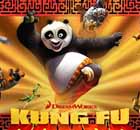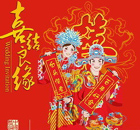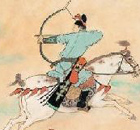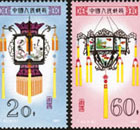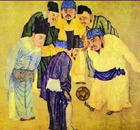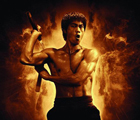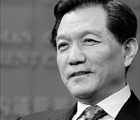Delicacies
The Tao of Food
Updated: 2008-04-21 10:17
 |
Large Medium Small |
Yin and yang are opposing, yet complimentary forces of the universe that balance each other out to create universal harmony. Everything is classified as either yin or yang, and everything is influenced by their constant ebb and flow. This vital tenet evolved into fundamental Taoist principals that classified food as either 'hot' or 'cold' with reference to the influence each food has on body function rather than simply relying on taste. The Taoist view became firmly ingrained centuries ago when Tao Hong Jing (456-536 AD), among others, advocated using hot food to warm up a cold body and vice versa.
It is still respected highly today. Ordinary Chinese will assert that imbalances in the body and food intake can cause disease just as westerners count calories, fat grams and carbs to remain healthy and fit. For Chinese, to maintain equilibrium foods, classified as yin, yang, or neutral depending on their effect on the body, are ingested accordingly. Yin foods calm, yang foods provoke hyperactivity. Yang foods include eggs, fatty meats and pungent spices; they are strong, rich and spicy. Yin foods: raw fruits and vegetables and seafood, are bitter, salty and light.
The Chinese also have another set of categories for foodstuffs: sweet (earth), bitter (fire), sour (wood), pungent (metal), and salty (water). Each type has influence over human organs and each also corresponds to a different season of the year. Salty foods are best in winter; they help the kidneys and bladder work well. Sweet, earth foods, for summer's end, get rid of inertia and calm the stomach while bitter foods, eaten in early summer influence the small intestine and heart. Sour, wood foods, meant for springtime, impact upon the liver and gallbladder and contrast with aromatic, metal foods that are eaten in the fall and have power over the large intestine and lungs.
Chinese chefs have through history used their ancient esoteric philosophy to choose between insufficiency and excess. Matching taste with an organ is an application of the 'five elements' concept in Chinese culture; it was incorporated with medicine and cooking simultaneously, along with taste, color, weather, and temperament.
Color also holds great import regarding the ingestion of food and/or medicine: red colored organic matter affects the heart, green the liver, yellow the 'spleen,' white the lung and black the kidney. Even today Chinese people prefer to eat a porridge of many colors and many pulses "for good luck" during the holidays because a) the colors are varied and so a better choice for overall health and b) the grains together act as a tonic to promote longevity.
